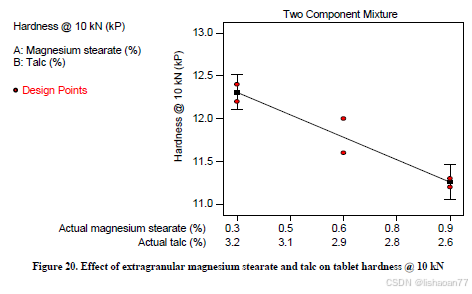用库造一个list的轮子 【C++】
文章目录
- list的模拟实现
- 默认成员函数
- 构造函数
- 拷贝构造函数
- 赋值运算符重载
- 析构函数
- 迭代器
- 迭代器为什么要存在?
- const_iterator
- begin和end
- insert
- erase
- push_back && pop_back
- push_front &&pop_front
- swap
- 完整代码
list的模拟实现
默认成员函数
构造函数
list是一个带头双向循环链表,在构造一个list对象时,new一个头结点,并让其prev和next都指向自己即可。
void empty_init(){_head = new Node;_head->_next = _head;_head->_prev = _head;_size = 0;}//默认构造list(){empty_init();}
拷贝构造函数
//拷贝构造函数
list(const list<T>& lt)
{_head = new node; //申请一个头结点_head->_next = _head; //头结点的后继指针指向自己_head->_prev = _head; //头结点的前驱指针指向自己for (auto & e : lt) //两个 e都是同一个{push_back(e); //将容器lt当中的数据一个个尾插到新构造的容器后面}
}赋值运算符重载
版本一(推荐):
参数不使用引用,让编译器自动调用list的拷贝构造函数构造出来一个list对象,然后调用swap函数将原容器与该list对象进行交换
这样做相当于将应该用clear清理的数据,通过交换函数交给了容器lt,而当赋值运算符重载函数调用结束时,容器lt会自动销毁,并调用其析构函数进行清理。
list<T> & operator= (list<T> lt)//右值没有引用传参,间接调用拷贝构造//list<T>& operator= ( list<T> * this, list<T> lt)//右值没有引用传参,间接调用拷贝构造// lt1 = lt2{this->swap(lt);return *this; }
版本二:
先调用clear函数将原容器清空,然后将容器lt当中的数据,通过遍历的方式一个个尾插到清空后的容器当中即可。
list<T>& operator=(const list<T>& lt)
{if (this != <) //避免自己给自己赋值{clear(); //清空容器for (const auto& e : lt){push_back(e); //将容器lt当中的数据一个个尾插到链表后面}}return *this; //支持连续赋值
}析构函数
对对象进行析构时,首先调用clear函数清理容器当中的数据,然后将头结点释放,最后将头指针置空
void clear(){iterator it = begin();while (it!= end() ) {it = erase(it);}_size = 0;}~list(){clear();delete _head;_head = nullptr;}
迭代器
迭代器为什么要存在?
string 和vector的迭代器
string和vector将数据存储在一段连续的内存空间,那么可以通过指针进行自增、自减以及解引用等操作,就可以对相应位置的数据进行一系列操作,所以string和vector是天然的迭代器

list的迭代器
list中各个结点在内存当中的位置是随机的,不一定是连续的,我们不能仅通过结点指针的自增、自减以及解引用等操作对相应结点的数据进行操作 ,采用类封装迭代器,在迭代器类的内部,重载 ++ 、 --、 *、 -> 、 !=、 == 这些迭代器会用到的运算符

const_iterator
在const迭代器中,const迭代器指向的内容不能被修改。也就是解引用返回的值不能被修改。迭代器本身是可以修改的,有两种解决方案 :
1 再封装一个const迭代器类
template< class T>//const 迭代器 ,让迭代器指向的内容不能修改, 迭代器本身可以修改struct __list_const_iterator{typedef list_node<T> Node;//构造函数__list_const_iterator(Node* node):_node(node){}const T& operator*()//出了作用域,节点的值还在,用引用//const: 返回节点的值,不能修改{return _node->_val;}//前置++,返回++之后的值__list_const_iterator& operator++()//__list_const_iterator& operator++(__list_const_iterator * this ){_node = _node->_next;return *this;}//后置++ ,返回++之前的值__list_const_iterator operator++(int){__list_const_iterator tmp(*this);_node = _node->_next;return tmp;// tmp出了作用域就被销毁 ,用传值返回 }bool operator==(const __list_iterator<T>& it){return *this == it._node;}bool operator!=(const __list_iterator<T>& it)//传值返回,返回的是拷贝,是一个临时对象,临时对象具有常性{return *this != it._node;}Node* _node;};
2 选择增加模板参数,复用代码(推荐)
template<class T, class Ref, class Ptr>

c++库就是用的这种解决方案
//template<class T> //list类存储的数据是任意类型,所以需要设置模板参数//普通迭代器//Ref是引用 ,Ptr是指针template<class T,class Ref,class Ptr>struct __list_iterator{typedef list_node<T> Node;typedef __list_iterator<T, Ref, Ptr> self;//构造函数__list_iterator(Node* node):_node(node){}Ref operator*(){return _node->_val;}Ptr operator->(){return &_node->_val;}//前置++,返回++之后的值self & operator++()//__list_iterator<T> & operator++(__list_iterator<T> * this ){_node = _node->_next;return *this;}//后置++ ,返回++之前的值self operator++(int)// __list_iterator<T> operator++( __list_iterator<T> * this ,int){self tmp(*this);//拷贝构造_node = _node->_next;return tmp; // tmp出了作用域就被销毁 ,用传值返回 }bool operator!= (const self& it){return _node != it._node;}bool operator== (const self & it){return _node == it._node;}Node* _node;};template<class T>//list类存储的数据是任意类型,所以需要设置模板参数class list{typedef list_node<T> Node;public:typedef __list_iterator<T ,T&,T* > iterator;typedef __list_iterator<T, const T&, const T * > const_iterator;//迭代器 //能直接显示构造最好显式构造,不要把决定权给编译器进行单参数的隐式类型转换iterator end() //最后一个数据的下一个位置,即头节点{//return _head; // _head的类型是list_node<T>* ,iterator的类型是__list_iterator<T> ,类型不一致,涉及到单参数的构造函数支持隐式类型转换 //还可以写成 return iterator(_head);return iterator(_head);}iterator begin()//第一个数据的位置,即头节点的下一个位置{//return _head->_next;//单参数的构造函数支持隐式类型转换//还可以写成 return iterator(_head->_next)return iterator(_head->_next);}const_iterator begin() const{return const_iterator(_head->_next);}const_iterator end() const{return const_iterator(_head);}//默认构造list(){empty_init();}// lt2(lt1)//还没有实现const_iteratorlist(const list<T>& lt){empty_init();//拷贝数据for (auto & e :lt )//遍历lt{push_back(e);}}~list(){clear();delete _head;_head = nullptr;}void empty_init(){_head = new Node;_head->_next = _head;_head->_prev = _head;_size = 0;}void swap(list<T> & lt){std:: swap(_head,lt._head );std::swap(_size, lt._size);}list<T> & operator= (list<T> lt)//右值没有引用传参,间接调用拷贝构造//list<T>& operator= ( list<T> * this, list<T> lt)//右值没有引用传参,间接调用拷贝构造// lt1 = lt2{this->swap(lt);return *this; }void clear(){iterator it = begin();while (it!= end() ) {it = erase(it);}_size = 0;}void push_back(const T& x){insert(end(), x);//在最后一个数据的下一个位置插入}//pos位置之前插入iterator insert(iterator pos, const T& x){Node* cur = pos._node;Node* prev = cur->_prev;Node* newnode = new Node(x);// prev newnode cur 链接关系prev->_next = newnode;newnode->_prev = prev;newnode->_next = cur;cur->_prev = newnode;++_size;return newnode;}iterator erase (iterator pos){assert(pos != end());Node* cur = pos._node;Node* next = cur->_next;Node* prev = cur->_prev;//prev next prev->_next = next;next->_prev = prev;delete cur;--_size;return next;}size_t size(){return _size;}void push_front( const T & x )//T可能是vector ,用引用,减少拷贝{insert(begin(),x);}void pop_back(){erase(--end());//end是最后一个数据的下一个位置,需要--,到达最后一个数据,这样才是尾删}void pop_front(){erase(begin());}private:Node* _head;size_t _size;};
当我们定义const对象时,会自动调用const修饰的迭代器。当调用const修饰的迭代器时,__list_iterator的模板参数就会实例化为const T&。实际上在实例化时,const和非const修饰的还是两个不同类,只不过是实例化的代码工作交给了编译器处理了。
begin和end
对于list,第一个有效数据的迭代器就是头结点后一个结点
begin函数返回的是第一个有效数据的迭代器,即头节点的下一个位置
end函数返回的是最后一个有效数据的下一个位置的迭代器,即头节点
iterator end() //最后一个数据的下一个位置,即头节点{return _head; // _head的类型是list_node<T>* ,iterator的类型是__list_iterator<T> ,类型不一致,涉及到单参数的构造函数支持隐式类型转换 //还可以写成 return iterator(_head);}iterator begin()//第一个数据的位置,即头节点的下一个位置{return _head->_next;//单参数的构造函数支持隐式类型转换//还可以写成 return iterator(_head->_next)}
const对象的begin函数和end函数
const_iterator begin() const{return const_iterator(_head->_next);//返回使用头结点后一个结点}const_iterator end() const{return const_iterator(_head);//返回使用头结点}insert

重新改变prev newnode cur 三者之间的链接关系
//pos位置之前插入iterator insert(iterator pos, const T& x){Node* cur = pos._node;Node* prev = cur->_prev;Node* newnode = new Node(x);// prev newnode cur 链接关系prev->_next = newnode;newnode->_prev = prev;newnode->_next = cur;cur->_prev = newnode;++_size;return newnode;}
erase

改变prev和next之间的链接关系,然后释放cur
iterator erase (iterator pos){assert(pos != end());Node* cur = pos._node;Node* next = cur->_next;Node* prev = cur->_prev;//prev next prev->_next = next;next->_prev = prev;delete cur ;--_size;return next;}
push_back && pop_back
void push_back(const T& x){insert(end(), x);//在最后一个数据的下一个位置插入}void pop_back(){erase(--end());//end是最后一个数据的下一个位置,需要--,到达最后一个数据,这样才是尾删}
push_front &&pop_front
void pop_front(){erase(begin());}void push_front( const T & x )//T可能是vector ,用引用,减少拷贝{insert(begin(),x);}
swap
swap函数用于交换两个容器,list容器当中存储的是链表的头指针和size,我们将这两个容器当中的头指针和size交换
void swap(list<T> & lt){std:: swap(_head,lt._head );std::swap(_size, lt._size);}
注意: 这里调用库里的swap模板函数,需要在swap函数之前加上“std::”,告诉编译器在c++标准库寻找swap函数,否则编译器编译时会认为你调用的是正在实现的swap函数(就近原则)
总结

完整代码
#pragma once
#include<iostream>
#include<assert.h>
#include<list>
using namespace std;
namespace cxq
{//list类存储的数据是任意类型,所以需要设置模板参数template<class T>//节点struct list_node{//构造函数list_node(const T& val = T()) //缺省值是匿名对象,c++对内置类型进行了升级:_prev(nullptr), _next(nullptr), _val(val){}list_node<T>* _prev;list_node<T>* _next;T _val;};//template<class T> //list类存储的数据是任意类型,所以需要设置模板参数//普通迭代器//Ref是引用 ,Ptr是指针template<class T,class Ref,class Ptr>struct __list_iterator{typedef list_node<T> Node;typedef __list_iterator<T, Ref, Ptr> self;//构造函数__list_iterator(Node* node):_node(node){}Ref operator*(){return _node->_val;}Ptr operator->(){return &_node->_val;}//前置++,返回++之后的值self & operator++()//__list_iterator<T> & operator++(__list_iterator<T> * this ){_node = _node->_next;return *this;}//后置++ ,返回++之前的值self operator++(int)// __list_iterator<T> operator++( __list_iterator<T> * this ,int){self tmp(*this);//拷贝构造_node = _node->_next;return tmp; // tmp出了作用域就被销毁 ,用传值返回 }bool operator!= (const self& it){return _node != it._node;}bool operator== (const self & it){return _node == it._node;}Node* _node;};//template< class T>const 迭代器 ,让迭代器指向的内容不能修改, 迭代器本身可以修改//struct __list_const_iterator//{// typedef list_node<T> Node;// //构造函数// __list_const_iterator(Node* node)// :_node(node)// {// }// const T& operator*()//出了作用域,节点的值还在,用引用// //const: 返回节点的值,不能修改// {// return _node->_val;// }// //前置++,返回++之后的值// __list_const_iterator& operator++()// //__list_const_iterator& operator++(__list_const_iterator * this )// {// _node = _node->_next;// return *this;// }// //后置++ ,返回++之前的值// __list_const_iterator operator++(int)// {// __list_const_iterator tmp(*this);// _node = _node->_next;// return tmp;// tmp出了作用域就被销毁 ,用传值返回 // }// bool operator==(const __list_iterator<T>& it)// {// return *this == it._node;// }// bool operator!=(const __list_iterator<T>& it)//传值返回,返回的是拷贝,是一个临时对象,临时对象具有常性// {// return *this != it._node;// }// Node* _node;//};template<class T>//list类存储的数据是任意类型,所以需要设置模板参数class list{typedef list_node<T> Node;public:typedef __list_iterator<T ,T&,T* > iterator;//普通迭代器typedef __list_iterator<T, const T&, const T * > const_iterator;//const 迭代器//迭代器 //能直接显示构造最好显式构造,不要把决定权给编译器进行单参数的隐式类型转换iterator end() //最后一个数据的下一个位置,即头节点{//return _head; // _head的类型是list_node<T>* ,iterator的类型是__list_iterator<T> ,类型不一致,涉及到单参数的构造函数支持隐式类型转换 //还可以写成 return iterator(_head);return iterator(_head);}iterator begin()//第一个数据的位置,即头节点的下一个位置{//return _head->_next;//单参数的构造函数支持隐式类型转换//还可以写成 return iterator(_head->_next)return iterator(_head->_next);}const_iterator begin() const{return const_iterator(_head->_next);}const_iterator end() const{return const_iterator(_head);}//默认构造list(){empty_init();}// lt2(lt1)//还没有实现const_iteratorlist(const list<T>& lt){empty_init();//拷贝数据for (auto & e :lt )//遍历lt{push_back(e);}}~list(){clear();delete _head;_head = nullptr;}void empty_init(){_head = new Node;_head->_next = _head;_head->_prev = _head;_size = 0;}void swap(list<T> & lt){std:: swap(_head,lt._head );std::swap(_size, lt._size);}list<T> & operator= (list<T> lt)//右值没有引用传参,间接调用拷贝构造//list<T>& operator= ( list<T> * this, list<T> lt)//右值没有引用传参,间接调用拷贝构造// lt1 = lt2{this->swap(lt);return *this; }void clear(){iterator it = begin();while (it!= end() ) {it = erase(it);}_size = 0;}void push_back(const T& x){找尾//Node* tail = _head->_prev;//Node* newnode = new Node(x);改变链接关系 ///*newnode = tail->next;*///tail->_next = newnode;//newnode->_prev = tail;//_head->_prev = newnode;//newnode->_next = _head;insert(end(), x);//在最后一个数据的下一个位置插入}//pos位置之前插入iterator insert(iterator pos, const T& x){Node* cur = pos._node;Node* prev = cur->_prev;Node* newnode = new Node(x);// prev newnode cur 链接关系prev->_next = newnode;newnode->_prev = prev;newnode->_next = cur;cur->_prev = newnode;++_size;return newnode;}iterator erase (iterator pos){assert(pos != end());Node* cur = pos._node;Node* next = cur->_next;Node* prev = cur->_prev;//prev next prev->_next = next;next->_prev = prev;delete cur;--_size;return next;}size_t size(){return _size;}void push_front( const T & x )//T可能是vector ,用引用,减少拷贝{insert(begin(),x);}void pop_back(){erase(--end());//end是最后一个数据的下一个位置,需要--,到达最后一个数据,这样才是尾删}void pop_front(){erase(begin());}private:Node* _head;size_t _size;};void test_list1(){list<int> lt1;lt1.push_back(1);lt1.push_back(2);list<int>::iterator it = lt1.begin();//拷贝构造while (it != lt1.end()){cout << *it << " ";it++;}cout << endl;}void test_list2(){list<int> lt1;lt1.push_back(1);lt1.push_back(2);list<int> lt2 (lt1);for (auto e : lt1){cout << e << " ";}cout << endl;}
}如果你觉得这篇文章对你有帮助,不妨动动手指给点赞收藏加转发,给鄃鳕一个大大的关注你们的每一次支持都将转化为我前进的动力!!!
相关文章:

用库造一个list的轮子 【C++】
文章目录 list的模拟实现默认成员函数构造函数拷贝构造函数赋值运算符重载析构函数 迭代器迭代器为什么要存在?const_iteratorbegin和end inserterasepush_back && pop_backpush_front &&pop_frontswap 完整代码 list的模拟实现 默认成员函数 构造…...

java中的,>>,<<位运算
目录 二进制 >>,<< & 二进制 计算机内部使用二进制计数 二进制:在数学和数字电路中指以2为基数的记数系统,以2为基数代表系统是二进位制的,这一系统中,通常用两个不同的符号0(代表零)和…...

成功解决Android设备adb连接后显示device unauthorized
一、提出问题 在电脑通过USB连接新的Android设备,想要通过adb来进行一些操作时,却发现命令提示符上在输入下面命令后显示设备未授权的信息也就是"unauthorized" adb devices二、不可行的解决方案 有人提出的解决方案是打开Android设备的开发…...

初识mysql数据库之引入mysql客户端库
目录 一、下载第三方库 1. 准备工作 1. 使用mysql官网提供的库 2. yum源安装 二、测试第三方库是否可用 三、mysql常用接口介绍 1. 查看官方文档 2. 初始化 3. 关闭mysql 4. 连接mysql 5. 下达sql指令 四、一个简单的C客户端库连接mysql程序 1. 头文件 2. 初始化…...

勘探开发人工智能技术:机器学习(1)
0 提纲 2.1 什么是机器学习 2.2 不确定性 2.3 数据类型 2.4 分类、回归、聚类 2.5 分类问题的训练与测试 2.6 性能评价指标 1 什么是机器学习 对于西瓜这个抽象类来说,它具有“色泽”,“根蒂”,“敲声”三个属性: 通过观察这个…...

MySQL查看当前数据库视图-SQL语句
引言 查询语句为: show full tables where table_type 可查询当前数据库表 一,创建一个视图 # 创建视图 create view v_stu as # 视图内容(连接的一个表) select name from t_stu union all select tname from t_teach; 二&…...

Clickhouse 存储引擎
一、常用存储引擎分类 1.1 ReplacingMergeTree 这个引擎是在 MergeTree 的基础上,添加了”处理重复数据”的功能,该引擎和MergeTree的不同之处在于它会删除具有相同主键的重复项。 特点: 1使用ORDERBY排序键作为判断重复的唯一键 2.数据的去重只会在合并…...

基于golang多消息队列中间件的封装nsq,rabbitmq,kafka
基于golang多消息队列中间件的封装nsq,rabbitmq,kafka 场景 在创建个人的公共方法库中有这样一个需求,就是不同的项目会用到不同的消息队列中间件,我的思路把所有的消息队列中间件进行封装一个消息队列接口(MQer)有两个方法一个…...

【第一阶段】kotlin的函数
函数头 fun main() {getMethod("zhangsan",22) }//kotlin语言默认是public,kotlin更规范,先有输入( getMethod(name:String,age:Int))再有输出(Int[返回值]) private fun getMethod(name:String,age:Int): Int{println("我叫…...

PAM安全配置-用户密码锁定策略
PAM是一个用于实现身份验证的模块化系统,可以在操作系统中的不同服务和应用程序中使用。 pam_faillock模块 pam_faillock模块用来实现账号锁定功能,它可以在一定的认证失败次数后锁定用户账号,防止暴力破解密码攻击。 常见选项 deny&…...

AndroidManifest.xml日常笔记
1 Bundle介绍 Bundle主要用于传递数据;它保存的数据,是以key-value(键值对)的形式存在的。 我们经常使用Bundle在Activity之间传递数据,传递的数据可以是boolean、byte、int、long、float、double、string等基本类型或它们对应的数组…...

SpringBoot异步框架
参考:解剖SpringBoot异步线程池框架_哔哩哔哩_bilibili 1、 为什么要用异步框架,它解决什么问题? 在SpringBoot的日常开发中,一般都是同步调用的。但经常有特殊业务需要做异步来处理,例如:注册新用户&…...

导出LLaMA ChatGlm2等LLM模型为onnx
通过onnx模型可以在支持onnx推理的推理引擎上进行推理,从而可以将LLM部署在更加广泛的平台上面。此外还可以具有避免pytorch依赖,获得更好的性能等优势。 这篇博客(大模型LLaMa及周边项目(二) - 知乎)进行…...

C++项目:在线五子棋对战网页版--匹配对战模块开发
玩家匹配是根据自己的天梯分数进行匹配的,而服务器中将玩家天梯分数分为三个档次: 1. 普通:天梯分数小于2000分 2. 高手:天梯分数介于2000~3000分之间 3. 大神:天梯分数大于3000分 当玩家进行对战匹配时,服…...

ssh 连接断开,正在执行的shell脚本也被中断了
背景 最近在训练chatGLM,一次训练经常要花掉近2个小时,但是由于网络不稳定,经常ssh莫名的断开,导致训练不得不重新开启,这就很浪费时间了 解决方案 下面教大家一种在后台执行命令的方案,即使你ssh连接断…...

UML 用例图,类图,时序图,活动图
UML之用例图,类图,时序图,活动图_用例图 时序图_siyan985的博客-CSDN博客 https://www.cnblogs.com/GumpYan/p/14734357.html 用例图与类图 - 简书...

Java 面试题2023
Java core JVM 1、JVM内存模型 2、JVM运行时内存分配 3、如何确定当前对象是个垃圾 4、GCrooot 包括哪些? 5、JVM对象头包含哪些部分 6、GC算法有哪些 7、JVM中类的加载机制 8、分代收集算法 9、JDK1.8 和 1.7做了哪些优化 10、内存泄漏和内存溢出有什么区别 11、J…...

【CSS3】CSS3 动画 ④ ( 使用动画制作地图热点图 )
文章目录 一、需求说明二、动画代码分析1、地图背景设置2、热点动画位置测量3、热点动画布局分析4、动画定义5、小圆点实现6、波纹效果盒子实现7、延迟动画设置 三、代码示例 一、需求说明 实现如下效果 , 在一张地图上 , 以某个位置为中心点 , 向四周发散 ; 核心 是实现 向四周…...

命令模式(Command)
命令模式是一种行为设计模式,可将一个请求封装为一个对象,用不同的请求将方法参数化,从而实现延迟请求执行或将其放入队列中或记录请求日志,以及支持可撤销操作。其别名为动作(Action)模式或事务(Transaction)模式。 Command is …...

Dapper 微型orm的光
介绍 Dapper是一个轻量级的ORM(对象关系映射)框架,它可以方便地将数据库查询结果映射到.NET对象上,同时也支持执行原生SQL查询。下面我将详细介绍Dapper的使用方法。 安装Dapper 首先,你需要通过NuGet包管理器将Dap…...

XCTF-web-easyupload
试了试php,php7,pht,phtml等,都没有用 尝试.user.ini 抓包修改将.user.ini修改为jpg图片 在上传一个123.jpg 用蚁剑连接,得到flag...

Xshell远程连接Kali(默认 | 私钥)Note版
前言:xshell远程连接,私钥连接和常规默认连接 任务一 开启ssh服务 service ssh status //查看ssh服务状态 service ssh start //开启ssh服务 update-rc.d ssh enable //开启自启动ssh服务 任务二 修改配置文件 vi /etc/ssh/ssh_config //第一…...

Zustand 状态管理库:极简而强大的解决方案
Zustand 是一个轻量级、快速和可扩展的状态管理库,特别适合 React 应用。它以简洁的 API 和高效的性能解决了 Redux 等状态管理方案中的繁琐问题。 核心优势对比 基本使用指南 1. 创建 Store // store.js import create from zustandconst useStore create((set)…...

云启出海,智联未来|阿里云网络「企业出海」系列客户沙龙上海站圆满落地
借阿里云中企出海大会的东风,以**「云启出海,智联未来|打造安全可靠的出海云网络引擎」为主题的阿里云企业出海客户沙龙云网络&安全专场于5.28日下午在上海顺利举办,现场吸引了来自携程、小红书、米哈游、哔哩哔哩、波克城市、…...

OkHttp 中实现断点续传 demo
在 OkHttp 中实现断点续传主要通过以下步骤完成,核心是利用 HTTP 协议的 Range 请求头指定下载范围: 实现原理 Range 请求头:向服务器请求文件的特定字节范围(如 Range: bytes1024-) 本地文件记录:保存已…...

SiFli 52把Imagie图片,Font字体资源放在指定位置,编译成指定img.bin和font.bin的问题
分区配置 (ptab.json) img 属性介绍: img 属性指定分区存放的 image 名称,指定的 image 名称必须是当前工程生成的 binary 。 如果 binary 有多个文件,则以 proj_name:binary_name 格式指定文件名, proj_name 为工程 名&…...

R语言速释制剂QBD解决方案之三
本文是《Quality by Design for ANDAs: An Example for Immediate-Release Dosage Forms》第一个处方的R语言解决方案。 第一个处方研究评估原料药粒径分布、MCC/Lactose比例、崩解剂用量对制剂CQAs的影响。 第二处方研究用于理解颗粒外加硬脂酸镁和滑石粉对片剂质量和可生产…...

云原生安全实战:API网关Kong的鉴权与限流详解
🔥「炎码工坊」技术弹药已装填! 点击关注 → 解锁工业级干货【工具实测|项目避坑|源码燃烧指南】 一、基础概念 1. API网关(API Gateway) API网关是微服务架构中的核心组件,负责统一管理所有API的流量入口。它像一座…...
: 一刀斩断视频片头广告)
快刀集(1): 一刀斩断视频片头广告
一刀流:用一个简单脚本,秒杀视频片头广告,还你清爽观影体验。 1. 引子 作为一个爱生活、爱学习、爱收藏高清资源的老码农,平时写代码之余看看电影、补补片,是再正常不过的事。 电影嘛,要沉浸,…...

「全栈技术解析」推客小程序系统开发:从架构设计到裂变增长的完整解决方案
在移动互联网营销竞争白热化的当下,推客小程序系统凭借其裂变传播、精准营销等特性,成为企业抢占市场的利器。本文将深度解析推客小程序系统开发的核心技术与实现路径,助力开发者打造具有市场竞争力的营销工具。 一、系统核心功能架构&…...
